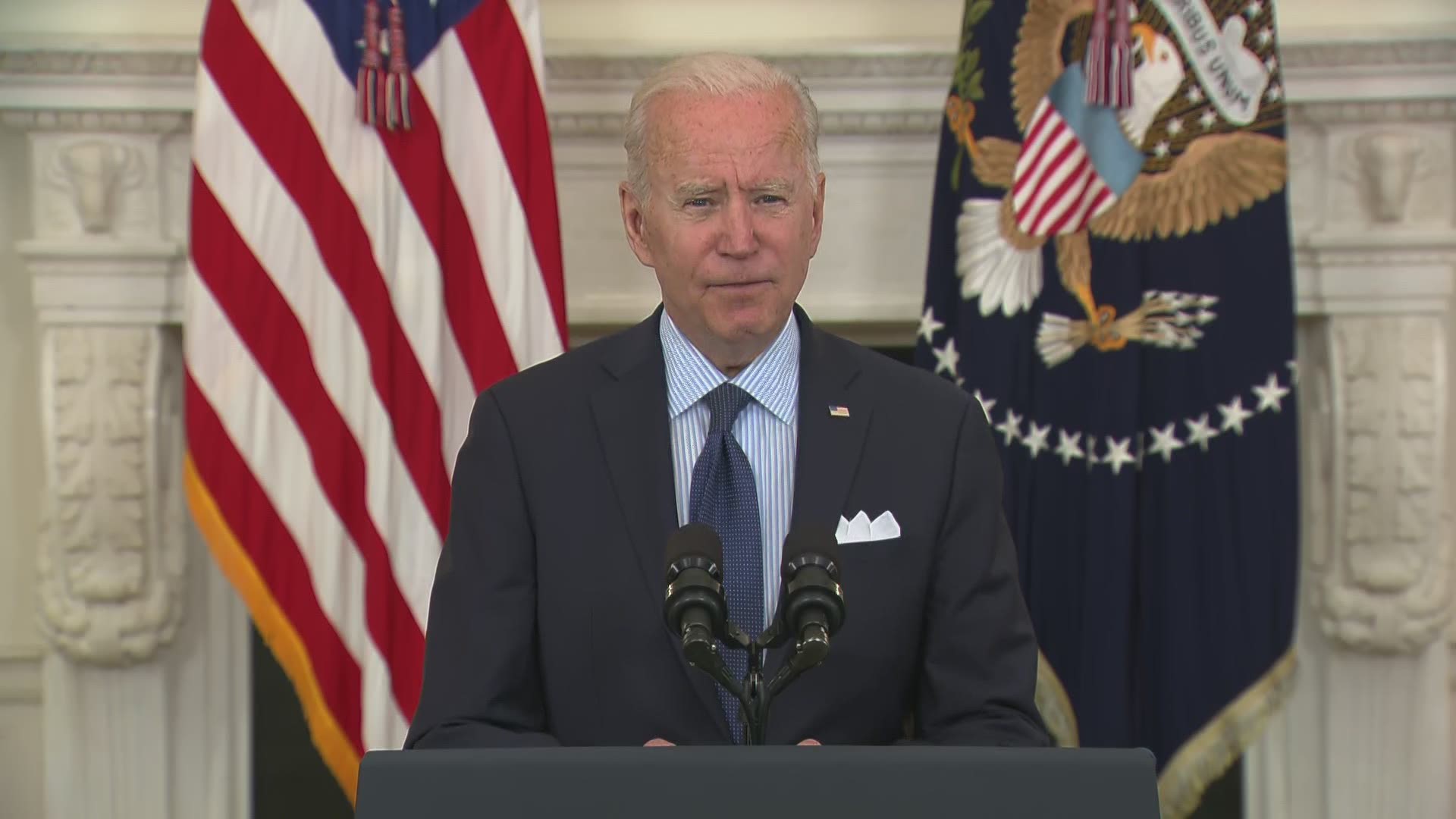WASHINGTON — President Joe Biden is setting a new vaccination goal to deliver at least one dose to 70% of adult Americans by July 4, the White House said Tuesday, as the administration pushes to make it easier for people to get shots and to bring the country closer to normalcy.
The new goal, which also includes fully vaccinating 160 million adults by Independence Day, comes as demand for vaccines has dropped off markedly nationwide, with some states leaving more than half their vaccine doses unordered. Biden will call for states to make vaccines available on a walk-in basis and will direct many pharmacies to do the same, and his administration is for the first time moving to shift doses from states with weaker demand to areas with stronger interest in the shots.
Biden’s goal is a tacit acknowledgment of the declining interest in shots. Already more than 56% of adult Americans have received at least one dose of a COVID-19 vaccine and nearly 105 million are fully vaccinated. The U.S. is currently administering first doses at a rate of about 965,000 per day — half the rate of three weeks ago, but almost twice as fast as needed to meet Biden's target.
Senior administration officials previewed the announcement Tuesday before Biden's planned speech from the White House. It comes as the Biden administration has shifted away from setting a target for the U.S. to reach ‘herd immunity,’ but instead focusing on delivering as many shots into arms as possible. Officials said that Biden's vaccination target would result in significant reduction in COVID-19 cases heading into the summer.
To that end, the Biden administration is shifting the government's focus toward expanding smaller and mobile vaccination clinics to deliver doses to harder-to-reach communities. It is also deploying hundreds of millions of dollars to try to boost interest in vaccines through education campaigns and access to shots through community organizations that can help bring people to clinics.
Ahead of the Food and Drug Administration's expected authorization of the Pfizer vaccine for adolescents aged 12-15 by early next week, the White House is also developing plans to speed vaccinations to that age group. Biden, the White House said, would "challenge" states to administer at least one dose to that age group by July Fourth and work to deliver doses to pediatricians' offices and other trusted locations, with the aim of getting as many of them fully vaccinated by the start of the next school year.
While younger people are at dramatically lower risk of serious complications from COVID-19, they have made up a larger share of new virus cases as a majority of U.S. adults have been at least partially vaccinated and as higher-risk activities like indoor dining and contact sports have resumed in most of the country. Officials hope that extending vaccinations to teens will further accelerate the nation’s reduced virus caseload and allow schools to reopen with minimal disruptions this fall.
Biden's speech comes as the White House announced a shift away from a strict by-population allocation of vaccines. The administration says that when states decline the vaccine they have been allocated, that surplus will shift to states still awaiting doses to meet demand. Those states would have the shots available whenever demand for vaccines in their states increases — a key priority of the Biden administration.
Governors were informed of the change by the White House Tuesday morning. The Washington Post first reported on the new allocation.
This week, Iowa turned down nearly three quarters of the vaccine doses available to the state for next week from the federal government because demand for the shots remains weak.
The White House previously resisted efforts to shift vaccine by metrics other than population, with Biden rebuffing Michigan Gov. Gretchen Whitmer last month when she requested more doses as her state was experiencing a surge in virus cases. White House press secretary Jen Psaki said at the time nearly all states were ordering at or near their population allocations, which is no longer the case.
Individual states have made similar shifts internally to account for changing demand. Last week, Washington state changed the way it allocates coronavirus vaccine to its counties. Previously the state doled out supplies to counties proportionate to their populations. But Gov. Jay Inslee said Thursday that the amounts now will be based on requests from health care providers.
.

